Katie Marie's Blog, page 9
April 9, 2025
Grief, Loss, and the Supernatural: Exploring the Themes of “The Fisherman” by John Langan
In “The Fisherman” by John Langan, readers are plunged into a haunting narrative that masterfully intertwines themes of grief, loss, and the supernatural.
This novel, a notable entry in supernatural horror, captivates with its rich atmosphere and complex characters, drawing readers into a world where the boundaries between reality and the supernatural blur.
As we explore “The Fisherman,” together we will see how Langan uses the eerie setting and intricate plot to build tension and suspense, inviting readers to ponder the existential questions that arise amidst the chilling events. Join me as we delve into this enthralling tale, a standout in grief and loss in literature, and discover the mysteries that unfold within its pages.
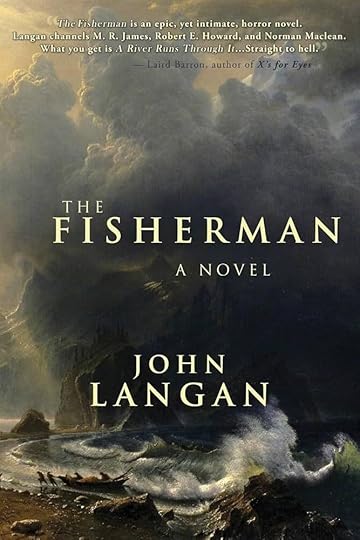 Themes of Grief and Loss
Themes of Grief and LossIn “The Fisherman,” John Langan skillfully weaves themes of grief and loss into the fabric of the novel, creating a powerful narrative that resonates with readers. The protagonist, Abe, finds solace in fishing after the devastating loss of his wife. This activity becomes both a refuge and a source of haunting memories. Langan uses Abe’s journey to explore how grief can manifest in unexpected ways, affecting the choices and paths we take.
The supernatural elements of the story further amplify these themes, as characters confront not only personal demons but also literal ones. Langan’s portrayal of grief is nuanced, reflecting the complexities of moving forward while being tethered to the past. This exploration of grief and loss invites readers to examine their own experiences with these emotions, making the novel not just a supernatural horror story but also a poignant reflection on the human condition.
Supernatural Elements Explored“The Fisherman” delves deeply into the supernatural, blending eerie folklore with personal tragedy. The novel introduces readers to a world where the natural and the otherworldly boundaries are blurred.
Langan taps into the uncanny by introducing the mysterious Dutchman’s Creek, a place rumored to grant wishes but at a dire cost. This setting becomes a character in itself, enticing those who are burdened with grief and loss. The supernatural elements are not just for thrills but serve as a metaphor for the characters’ internal struggles. They challenge the characters to confront their deepest fears and desires.
Langan invites readers to question what lies beyond our understanding through vivid descriptions and a chilling atmosphere. This exploration of the supernatural in horror literature elevates the narrative, transforming it into a thought-provoking journey into the unknown and the consequences of venturing too far.
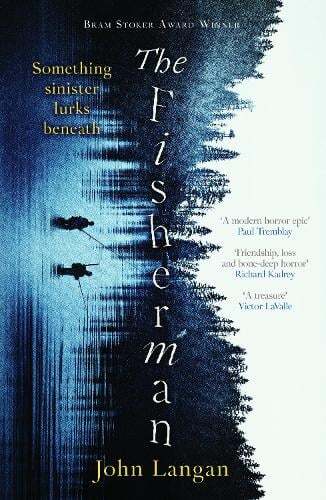 Complex Characters and Relationships
Complex Characters and RelationshipsLAt the heart of the story is Abe, a man grappling with profound loss and attempting to find solace in the ordinary act of fishing. His journey is intertwined with that of Dan, a colleague who shares a similar burden of grief. Their bond, forged through shared experiences of loss, is central to the unfolding events.
Langan portrays their friendship with authenticity, highlighting how shared pain can both unite and isolate individuals. The novel explores how these complex characters navigate their relationships amidst the backdrop of supernatural horror. Each character’s depth is revealed through their interactions, choices, and the secrets they keep. Langan’s ability to delve into the intricate dynamics of human connections adds layers to the story, making it not just a tale of horror, but a profound exploration of companionship and the human psyche.
Suspenseful Atmosphere CreationThe setting—primarily the enigmatic Dutchman’s Creek—plays a crucial role in establishing this tension. Langan’s descriptions of the natural surroundings are rich and detailed, evoking a sense of foreboding that permeates the novel. The brooding landscape mirrors the internal turmoil of the characters, enhancing the eerie mood that lingers throughout the story.
Langan uses the unknown depths of the creek as a metaphor for the mysteries that lie within the human heart. The gradual unveiling of these mysteries, coupled with the characters’ descent into the supernatural, keeps readers on edge. Langan’s pacing is deliberate, allowing suspense to build slowly, drawing readers deeper into the narrative. This meticulously crafted atmosphere not only serves to captivate but also to underscore the novel’s themes, making it a standout in supernatural horror literature.
 Role of Setting in Unease
Role of Setting in UneaseThe setting of “The Fisherman” is instrumental in cultivating a sense of unease that threads through the entire novel. John Langan meticulously crafts locations that are not merely backdrops but active participants in the story. The ominous Dutchman’s Creek, with its dark, swirling waters and the legends surrounding it, serves as a constant reminder of the unknown forces at play.
This setting amplifies the characters’ internal struggles, enhancing the novel’s tension. Langan’s vivid portrayal of the natural environment envelops the reader, making the creeping dread almost tangible. The foreboding landscape becomes a reflection of the characters’ fears and unresolved grief, intensifying their psychological turmoil.
The setting also acts as a catalyst for the supernatural events that unfold, blurring the line between reality and nightmare. By leveraging the power of the setting, Langan effectively creates an atmosphere that unsettles and captivates, drawing readers deeper into his compelling narrative.
Pacing and Tension DevelopmentThe story unfolds with a measured tempo, allowing readers to fully absorb the weight of the characters’ grief and the eerie mysteries they encounter. This deliberate pacing is crucial, as it mirrors the slow unraveling of the supernatural elements at play.
Langan intersperses moments of quiet reflection with bursts of intense action, maintaining a balance that keeps readers engaged. As the plot progresses, the tension mounts steadily, driven by the characters’ deepening involvement with the supernatural. The incremental revelations and mounting stakes compel the reader to continue, eager to uncover the next piece of the puzzle.
Langan’s skillful pacing ensures that each twist and turn amplifies the suspense, creating a gripping narrative that holds the reader’s attention until the very end. This thoughtful approach to pacing not only sustains tension but also enriches the storytelling experience.
April 7, 2025
Survive Together: The Thrills of Cooperative Gameplay in Zombicide
In the realm of zombie board games, few titles capture the essence of survival and teamwork quite like Zombicide.
This cooperative gameplay experience plunges players into a suspenseful world where they must band together as survivors against relentless hordes of the undead. As the tension mounts with each turn, players are challenged not only by the game’s intricate board game mechanics but also by the need for strategic thinking and effective communication. The thrill of Zombicide lies in its ability to foster a sense of camaraderie, making it an exhilarating choice for families and friends seeking a shared adventure.
In this Zombicide review, I will delve into the game’s rich character development, atmospheric artwork, and the thematic elements that make it a standout in the genre, inviting board game enthusiasts to discover the excitement of surviving together.
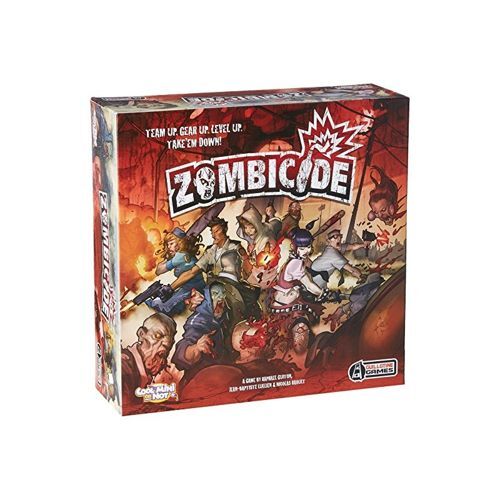 Mastering Board Game Mechanics
Mastering Board Game MechanicsZombicide challenges players to master its intricate board game mechanics, a critical aspect that adds depth to its cooperative gameplay.
Each player assumes the role of a uniquely skilled survivor, whose abilities must be strategically deployed to overcome the relentless zombie onslaught. The game board, ever-changing with each mission, demands adaptability and foresight. Players must navigate this evolving landscape, collecting essential items and weapons to increase their chances of survival. Communication is key as players must coordinate their actions, discussing tactics and sharing resources to achieve mission objectives.
The turn-based system heightens suspense, as every decision impacts the group’s survival. With each passing round, the undead become more numerous and aggressive, pushing players to refine their strategies continuously. Mastering Zombicide’s mechanics is not just about understanding the rules, but leveraging them to build a cohesive, resilient team poised to tackle any undead challenge.
Teamwork in Board GamesI really enjoy games where players work together to achieve a goal, I think it’s why Arkham Asylum is one of my favourite games. In Zombicide, teamwork isn’t just encouraged—it’s essential for success.
The game’s cooperative nature requires players to work closely together, pooling their individual strengths to form a united front against the zombie menace. Each player’s role is crucial, whether it’s scouting for resources, engaging zombies in combat, or supporting fellow survivors. This sense of interdependence fosters a unique bond among players, as they must rely on each other’s skills and decision-making abilities.
The game creates scenarios where sacrifices may be necessary for the greater good, prompting discussions about risk and reward. Effective communication becomes a vital tool, allowing players to strategize and adapt to the ever-evolving challenges on the board. Through this collaborative approach, Zombicide not only tests players’ strategic acumen but also their ability to function as a cohesive team. The result is an immersive experience that highlights the power of teamwork in board games, making each victory truly rewarding.
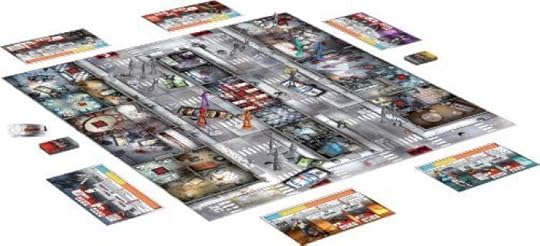 Evolution of Zombicide Characters
Evolution of Zombicide CharactersIn Zombicide, character development is integral to the game’s immersive experience. Each survivor starts with a unique skill set that evolves as the game progresses, reflecting their growing expertise and adaptability in the face of danger. This progression system is a core element of Zombicide’s appeal, as players witness their characters transform from vulnerable individuals into formidable warriors. As survivors gain experience points by defeating zombies and completing objectives, they unlock new abilities that enhance their roles within the team.
This evolution not only adds a personal investment for players but also demands strategic foresight to maximize each character’s potential. The dynamics of a mission can shift dramatically based on how characters are developed, encouraging players to tailor their strategies accordingly. Zombicide’s focus on character evolution enriches the narrative, making each game a personalized journey where players connect deeply with their avatars, enhancing the thrill of surviving the undead apocalypse.
Strategic Depth and Decision MakingZombicide offers a rich layer of strategic depth that elevates its gameplay beyond mere survival. The game requires players to make critical decisions at every turn, balancing immediate needs against long-term goals. With each player controlling a distinct character, decisions must account for both individual strengths and the team’s overall strategy.
This complexity is compounded by resource management; players must wisely choose when to search for supplies, when to engage in combat, and when to retreat. The unpredictability of zombie spawns adds an element of suspense, necessitating contingency plans and flexible thinking. Each decision can significantly alter the course of the game, making strategic planning vital. The need to anticipate opponents’ moves and work collaboratively to outmaneuver the undead creates a dynamic and engaging experience.
In Zombicide, the depth of strategy and decision-making not only challenges players but also enhances the sense of accomplishment with every successful mission.
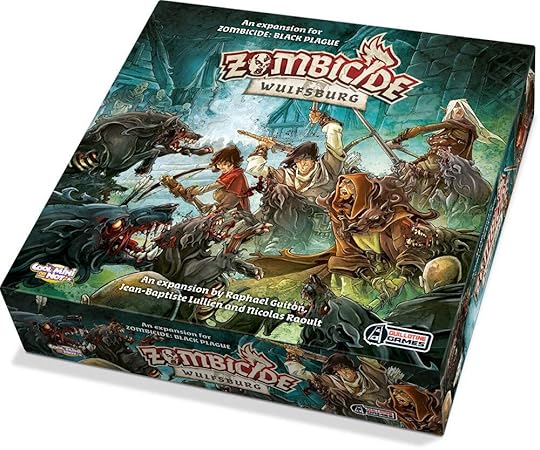 Version 1.0.0Thematic Artwork and Design
Version 1.0.0Thematic Artwork and DesignZombicide captivates players with its compelling thematic artwork and meticulous design that bring its dystopian world to life. The game boasts richly detailed components, from intricately sculpted miniatures representing both survivors and zombies to immersive board designs that depict a city overrun by chaos. Each piece is crafted to enhance the atmosphere, pulling players deeper into the narrative of survival against the undead.
The color palette and graphic design choices further amplify the tension, with stark contrasts and shadowy hues that evoke a sense of dread and urgency. The visual elements are not only aesthetic but functional, aiding players in navigating the board and strategizing their moves. This attention to detail ensures that every aspect of the game is aligned with its theme, creating a cohesive and engaging experience. By combining art and design, Zombicide succeeds in capturing the imagination, making each session a visually stimulating adventure through a post-apocalyptic landscape.
Enhancing Family-Friendly GamesZombicide manages to strike a delicate balance, making the thrill of survival horror accessible to families and friends alike. Its cooperative gameplay encourages players to bond over shared objectives, fostering a sense of teamwork that is crucial for family-friendly games. The game’s vibrant artwork and engaging narrative are designed to captivate a wide audience, making it suitable for players of diverse ages.
While the theme of battling zombies adds an element of suspense, it is presented in a way that maintains a light-hearted, adventurous tone, a great introduction to the horror or zombie genre for the family. This approach ensures that the game remains inclusive, allowing younger players to participate alongside seasoned veterans.
The emphasis on collaboration over competition makes Zombicide an excellent choice for family game nights, where communication and collective problem-solving are at the forefront. By enhancing the social aspect of gaming, Zombicide transforms the experience into an enjoyable and memorable event for everyone involved.
April 6, 2025
Indie Sale is Still on NOW!
The Narratess Indie Book Sale is still on today – don’t miss out!
My novella A Man in Winter is part of the sale, so if you haven’t grabbed your copy yet, now’s the perfect time.
Browse the deals and support indie authors here: https://indiebook.sale/

April 4, 2025
Tales from the Archive: Horror Writing: Lessons from Horror Writers
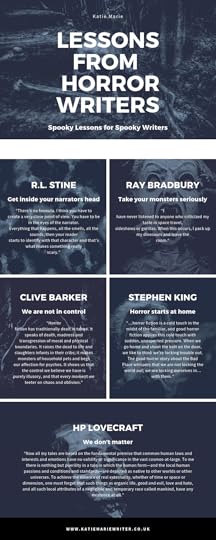
April 2, 2025
April Book Sale Alert: Get Your Discount on “A Man in Winter” and Explore the Best of Indie Novels
April is the perfect time to dive into the world of indie novels, and the Narratess Indie Sale is here to offer you an irresistible opportunity. From April 5th to 7th, seize the chance to explore “A Man in Winter,” a gripping horror novella that promises to captivate fans of speculative fiction.
This exclusive April book sale is your gateway to discovering the creativity and depth of independent authors, all while enjoying a generous book discount.
Indie book promotion has never been more exciting, and we’re thrilled to invite you on this literary journey that champions the spirit of entrepreneurship and creativity. Get ready to support indie authors and uncover hidden gems that could become your next favorite reads.
 Discover “A Man in Winter”
Discover “A Man in Winter”Arthur, whose life was devastated by the brutal murder of his wife, must come to terms with his diagnosis of dementia. He moves into a new home at a retirement community, and shortly after, has his life turned upside down again when his wife’s ghost visits him and sends him on a quest to find her killer so her spirit can move on. With his family and his doctor concerned that his dementia is advancing, will he be able to solve the murder before his independence is permanently restricted?
A Man in Winter examines the horrors of isolation, dementia, loss, and the ghosts that come back to haunt us.
For readers, this blend of a gripping plot and well-crafted characters ensures a reading experience that is both thrilling and immersive. As you turn the pages, you’ll find yourself invested in their journey, eager to see how their stories unfold against the backdrop of a haunting winter landscape.
Pick up A Man in Winter for $0.99
Narratess Indie SaleThe April book sale at the Narratess Indie Sale is a remarkable event for book lovers. Running from April 5th to 7th, this sale offers exclusive discounts on a selection of indie novels, including “A Man in Winter.”
During the sale, readers can enjoy substantial discounts, making it an ideal time to expand your library with fresh and intriguing reads. The focus on independent authors means you have the chance to explore narratives that might not be available in mainstream publishing.
Don’t miss this opportunity to support talented indie authors and enjoy the benefits of the April book sale. Whether you’re a seasoned fan of indie novels or new to the genre, the sale provides a perfect gateway to discover unique stories and perspectives.
March 31, 2025
Tales from the Archive: Horror Writing: Benefits of Diversity in Books
To understand the benefits of diversity, you need to understand what diversity really means. The dictionary defines diversity as including individuals representing more than one national origin, colour, religion, socioeconomic, stratum, sexual orientation, etc. This is a great definition, as often when this conversation is had we focus it down to one of these elements and it is important to remember that it is a multifaceted movement.
Diversity is becoming more and more apparent in our media, and that’s great! We now see more autistic characters, more physically disabled characters, and characters with mental health issues in our media and our stories. We are seeing these characters in our stories as actual three-dimensional characters, with real depth, more than just a surface level disability, or race, or gender, or sexual orientation, etc. More and more these characters are portrayed as a real, complex person, not just a stereotype or a sidekick, a tool for the author to say, “look I have a diverse cast”.
March 27, 2025
Literary Hauntings: How Charles Dickens’ ‘The Haunted House’ Challenges Classic Horror Conventions
Charles Dickens’ “The Haunted House” (1859) serves as a fascinating exploration of classic horror conventions, challenging traditional notions with its intricate narrative structure and unique thematic elements (which starkly contrast with the typical ghost stories of its time). Unlike conventional horror tales that rely heavily on supernatural scares, Dickens employs psychological complexity and social commentary to evoke a sense of unease—drawing readers into a world where the haunting is as much about the characters’ inner demons as it is about spectral apparitions (thus inviting a deeper literary analysis). By blending his signature wit with an astute critique of societal norms, Dickens not only enriches the genre but also prompts readers to question their preconceived notions of fear and the supernatural, positioning “The Haunted House” as a pivotal work that continues to inspire thoughtful discourse among literary enthusiasts and horror aficionados alike.
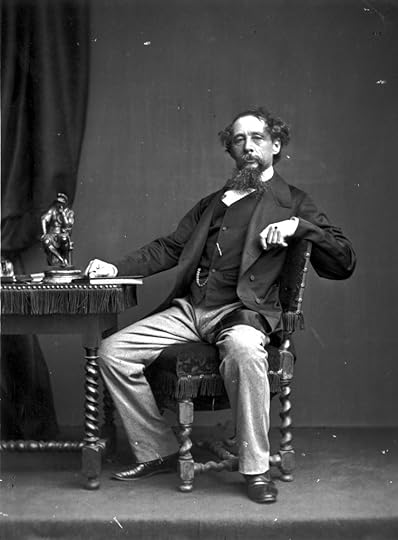 Reimagining Classic Horror Conventions
Reimagining Classic Horror ConventionsIn “The Haunted House,” Charles Dickens reimagines classic horror conventions by shifting the focus from overt supernatural elements to the psychological and social dimensions of fear. Rather than relying on ghostly manifestations to drive the narrative, Dickens emphasizes the internal struggles and societal pressures faced by his characters. This nuanced approach allows readers to explore fear as a multifaceted experience, one that is often rooted in personal and cultural contexts. By doing so, Dickens challenges the traditional boundaries of ghost stories, presenting a narrative that is both introspective and critical of contemporary societal norms. His work invites readers to question what truly constitutes horror—whether it is the external specters that haunt us or the internal conflicts that we grapple with daily. This innovative perspective not only enriches the genre but also offers a profound literary analysis of the human condition within the framework of classic horror.
The Unique Ghost Stories ApproachCharles Dickens’ approach to ghost stories in “The Haunted House” is distinguished by its departure from the conventional reliance on supernatural thrills. Instead, Dickens crafts a narrative that intertwines the psychological nuances of his characters with the eerie ambiance of the haunted setting. By employing ghost story elements as a backdrop for exploring themes such as guilt, regret, and societal critique, Dickens elevates the narrative beyond mere specter-driven fear. This method allows for a more profound engagement with the text, encouraging readers to consider the broader implications of the haunting. Moreover, Dickens’ use of multiple narrators adds layers of perspective, enhancing the complexity of the story and inviting readers to piece together the mystery through diverse lenses. This multifaceted storytelling not only defies typical ghost story tropes but also positions “The Haunted House” as an innovative work that challenges readers to reconsider the essence of fear and the supernatural.
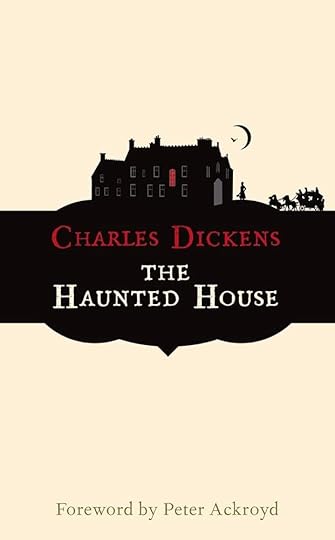 Literary Analysis of The Haunted House
Literary Analysis of The Haunted HouseA literary analysis of Charles Dickens’ “The Haunted House” reveals a rich tapestry of themes and narrative techniques that subvert traditional ghost story frameworks. Dickens weaves a complex narrative structure, utilizing multiple narrators to offer varied perspectives and deepen the reader’s understanding of the characters’ psychological landscapes. This polyphonic approach not only enriches the narrative but also mirrors the fragmented nature of human perception and memory. Themes of social critique are evident as Dickens uses the haunted house as a metaphor for Victorian society, critiquing its rigid class structures and moral hypocrisies. Additionally, the interplay between the physical and psychological realms in the story challenges readers to reflect on the origins of fear and the haunting presence of unmet desires and unresolved conflicts. Through this literary lens, “The Haunted House” invites a nuanced exploration of human nature, making it a compelling subject for both literary enthusiasts and horror genre scholars.
Challenging Classic Horror NormsIn “The Haunted House,” Charles Dickens challenges classic horror norms by eschewing reliance on typical supernatural elements in favor of a more introspective exploration of fear and anxiety. Traditional ghost stories often focus on external manifestations of horror, but Dickens shifts this paradigm by emphasizing the internal struggles and societal dynamics that haunt individuals. His characters are not merely passive victims of ghostly forces; instead, they grapple with their own psychological demons, reflecting broader societal issues such as class tension, moral ambiguity, and existential dread. By doing so, Dickens critiques the superficial thrills of classic horror, suggesting that true terror lies within human complexities and societal constructs. This approach not only subverts expectations but also encourages readers to engage with the narrative on a deeper, more analytical level. Consequently, Dickens’ work transcends conventional genre limitations, offering a sophisticated commentary on the nature of fear and the human condition within the framework of ghost stories.
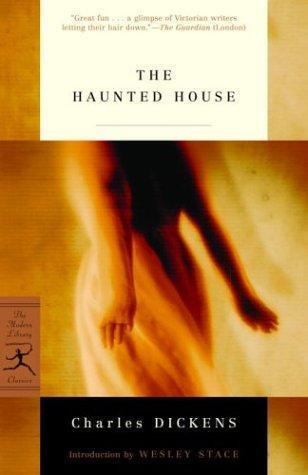 Dickens’ Innovative Narrative Techniques
Dickens’ Innovative Narrative TechniquesCharles Dickens employs innovative narrative techniques in “The Haunted House” to subvert traditional ghost story conventions and engage readers on multiple levels. One significant technique is the use of multiple narrators, which provides a multifaceted view of the haunted house and its occupants. This narrative diversity allows for a complex exploration of themes such as identity and perception, as each character brings their unique perspective and biases to the story. Additionally, Dickens’ incorporation of humor and social commentary within the horror framework challenges the genre’s norms, offering a narrative that is as much a critique of society as it is a tale of the supernatural. By blending wit with an astute observation of human nature, Dickens creates a rich, layered text that transcends the typical ghost story. This approach not only keeps readers engaged through its unpredictability but also deepens the literary analysis of what constitutes horror and how it reflects broader societal issues.
The Haunted House as a Social CommentaryIn “The Haunted House,” Charles Dickens uses the setting and narrative as a vehicle for social commentary, interweaving critique of Victorian society with elements of a ghost story. The haunted house itself becomes a metaphor for societal structures that are oppressive and laden with secrets. Within its walls, characters confront not only spectral beings but also the rigid class divisions and moral contradictions of their time. Dickens highlights these issues through character interactions and the unfolding of personal stories, revealing how societal pressures can haunt individuals more persistently than any ghost. This approach encourages readers to reflect on the social injustices and hypocrisies prevalent in their own environments. By using a familiar genre to address complex social themes, Dickens invites a broader discussion about the nature of fear and the influence of societal norms on personal identity. This dual-layered narrative enriches the text, making it a potent work of both horror and social critique.
March 26, 2025
Unmasking the Noppera-bō: Delving into the Origins of Japan’s Faceless Ghost
In the shadowy realms of Japanese folklore lurks a creature that has both fascinated and terrified generations: the Noppera-bō, or faceless ghost. This enigmatic apparition, with its eerily smooth visage, serves as a haunting symbol of fear and the uncanny, weaving its way through chilling tales and spine-tingling encounters.
But what lies beneath the featureless mask of the Noppera-bō? In this exploration, we will delve into the origins of this spectral figure, unraveling the cultural significance that has cemented its place in Japan’s rich tapestry of supernatural lore. Join me as we uncover the mysteries of the Noppera-bō and discover why this faceless ghost continues to captivate the imaginations of horror enthusiasts and cultural scholars alike.
[image error]Pexels.com" data-medium-file="https://katiemariewriter.com/wp-conte..." data-large-file="https://katiemariewriter.com/wp-conte..." width="1880" height="1253" src="https://katiemariewriter.com/wp-conte..." alt="" class="wp-image-12320" srcset="https://katiemariewriter.com/wp-conte... 1880w, https://katiemariewriter.com/wp-conte... 150w, https://katiemariewriter.com/wp-conte... 300w, https://katiemariewriter.com/wp-conte... 768w, https://katiemariewriter.com/wp-conte... 1024w" sizes="(max-width: 1880px) 100vw, 1880px" />Photo by Satoshi Hirayama on Pexels.comAncient Tales and MythsThe genesis of the Noppera-bō, or faceless ghost, can be traced back to ancient Japanese tales that captivated and unnerved audiences. One of the most notable stories is found in the Ugetsu Monogatari, a collection of supernatural tales by Ueda Akinari from the 18th century. In these stories, the Noppera-bō often appears in desolate locales, such as lonely roads or remote riversides, where unsuspecting travelers encounter its haunting visage.
These tales emphasize the ghost’s ability to instill dread with its featureless face, a powerful symbol of the unknown. In many stories, the Noppera-bō transforms from a seemingly ordinary person into a faceless entity, embodying the fear of losing one’s identity. This motif of transformation and the eerie ambiguity surrounding it have cemented the Noppera-bō’s place in Japanese folklore, highlighting the cultural significance of these ancient myths in shaping contemporary horror narratives.
Evolution in Japanese FolkloreThe Noppera-bō’s evolution in Japanese folklore reflects the cultural and societal shifts over centuries. Initially rooted in ancient myths, the faceless ghost was depicted as a solitary, fearsome entity haunting rural landscapes. As Japan modernized, the Noppera-bō’s narrative adapted, integrating into urban legends and contemporary tales.
This transition highlights the creature’s enduring ability to embody existential fears, such as anonymity or losing one’s identity amidst societal changes. With the advent of mass media, the Noppera-bō found new life in literature, film, and art, further enriching its mythos. It became a versatile symbol, appearing in various contexts ranging from cautionary tales to horror fiction. This adaptability underscores its cultural significance, as the Noppera-bō continues to resonate with audiences by reflecting their deepest anxieties. The faceless ghost’s enduring presence in Japanese folklore demonstrates its unique capacity to evolve while retaining its core essence of fear and mystery.
 Chilling Stories from the Past
Chilling Stories from the PastThroughout history, tales of the Noppera-bō have emerged from across Japan, each story adding to its chilling mystique. One of the most famous accounts involves a fisherman who encounters the faceless ghost by a river. As he approaches what appears to be a weeping woman, she turns to reveal her blank visage, sending him fleeing in terror. This story, along with others like it, captures the terrifying surprise and horror associated with the Noppera-bō.
Another tale recounts an encounter in Edo (modern-day Tokyo), where a merchant meets a Noppera-bō disguised as his wife, only to reveal its true form in a moment of unsettling transformation. Such stories have circulated for centuries, serving as cautionary tales and entertainment. They illustrate the ghost’s ability to unsettle even the bravest of souls, cementing its place in Japanese folklore as an enduring symbol of fear and mystery.
Modern-Day Sightings and ExperiencesIn modern times, reports of Noppera-bō encounters continue to intrigue and unsettle both locals and tourists in Japan. These contemporary sightings often occur in urban settings, reflecting the ghost’s adaptation to new environments. Some people claim to have seen faceless figures on busy streets or in crowded subway stations, often mistaking them for everyday passersby until the chilling moment of revelation. These accounts highlight the Noppera-bō’s enduring presence and its ability to evoke fear even amidst the familiar hustle and bustle of modern life.
Additionally, the faceless ghost has found a place in popular media, appearing in films, television shows, and manga, where it captures the imagination of new generations. These portrayals often explore themes of alienation and identity, resonating with audiences across cultural contexts. The Noppera-bō’s continued relevance in modern folklore underscores its cultural significance, as it remains a powerful symbol of the eerie and the unknown.
[image error] Symbolism in Art and LiteratureThe Noppera-bō, or faceless ghost, has long been a potent symbol in Japanese art and literature, representing themes of identity and existential fear. In traditional woodblock prints, artists like Katsushika Hokusai depicted the Noppera-bō to evoke a sense of mystery and unease. These artworks often captured the ghost’s haunting transformation, serving as visual metaphors for the unknown.
In literature, the Noppera-bō appears in ghost stories and modern novels alike, where its facelessness symbolizes the loss of self in an increasingly impersonal world. Contemporary authors and filmmakers use the Noppera-bō to explore themes of anonymity and alienation, resonating with readers and viewers in a digital age where identity can be both fluid and fragile. By embodying these complex themes, the faceless ghost remains a relevant and powerful figure in Japan’s cultural landscape, continuing to inspire and unsettle those who encounter it in art and narrative.
Influence on Modern Media and CultureThe Noppera-bō’s influence extends into modern media and culture, where it continues to captivate audiences with its haunting presence. In Japanese films and anime, the faceless ghost often appears as a metaphor for identity crises or societal fears, reflecting contemporary anxieties. For instance, its depiction in Studio Ghibli’s Spirited Away as a ghostly figure highlights themes of transformation and self-discovery.
Additionally, the Noppera-bō has inspired elements in video games, where its unsettling visage is used to create tension and fear. Beyond Japan, the faceless ghost’s imagery has influenced global horror genres, appearing in movies and literature that explore the unknown. This cross-cultural appeal underscores the Noppera-bō’s versatility as a symbol of fear and intrigue. By continuing to evolve and adapt, the Noppera-bō maintains its relevance in popular culture, engaging audiences with its enigmatic presence and the timeless questions it raises about identity and the human experience.
March 24, 2025
The Intersection of History and Horror: Understanding the Moors Murders through Criminal Psychology
The Moors Murders, often cited as one of Britain’s most notorious crimes, represent a chilling intersection of historical crime and the darker facets of human psychology (particularly when viewed through the lens of criminal psychology). As we delve into this infamous case, it serves not only as a grim reminder of the past, but also as a compelling study for true crime enthusiasts and historians alike who seek to understand the intricate workings of the criminal mind.
The gruesome acts committed by Ian Brady and Myra Hindley in the 1960s (which shocked the nation and left an indelible mark on British history) prompt us to question the societal and psychological factors that could lead to such heinous behavior. By examining these historical crime cases, we can foster a deeper discussion about the potential for darkness within human nature and the societal structures that both constrain and, occasionally, enable such transgressions.
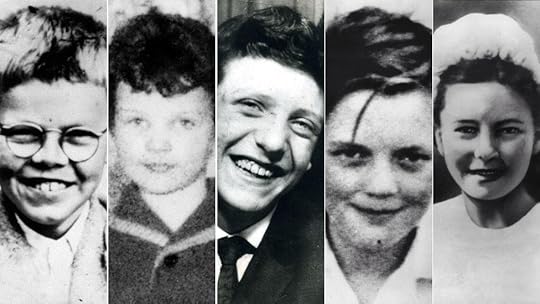 Britain’s Notorious Crimes: A Brief Overview
Britain’s Notorious Crimes: A Brief OverviewWhen exploring Britain’s notorious crimes, certain cases inevitably rise to prominence due to their sheer impact and the lingering questions they pose. The Moors Murders stand alongside other infamous criminal acts like the Jack the Ripper killings and the Yorkshire Ripper attacks, each leaving a distinct mark on the national psyche. These crimes, while separated by time and circumstance, share common threads—public outrage, intense media scrutiny, and a profound societal introspection.
The Moors Murders, in particular, highlighted the vulnerabilities in 1960s Britain, not only in terms of law enforcement’s ability to apprehend offenders but also in the ways society grapples with such profound evil. By examining these historical crime cases, scholars and enthusiasts alike can gain insight into the darkest recesses of human behavior and the societal factors that can either contain or exacerbate such tendencies. Understanding these events requires an appreciation of their historical context and the psychological complexities involved.
True Crime Enthusiasm and Historical ContextThe allure of true crime, particularly regarding cases like the Moors Murders, is deeply rooted in an intense curiosity about the darker aspects of human nature and the historical conditions that foster them. This enthusiasm is not merely about sensationalism; it involves a profound desire to comprehend the complexities of criminal psychology and societal impact.
During the 1960s, Britain was undergoing significant cultural and social transformations, with the Moors Murders occurring against this backdrop of change. This context magnifies the intrigue surrounding the case—how did such atrocities occur in a society on the brink of modernity?
For historians, the Moors Murders serve as a lens through which we can examine the interplay between individual pathology and broader societal dynamics. By understanding the era in which these crimes were committed, we gain valuable insights into the conditions that may have facilitated such criminal behavior, thus enriching our grasp of both historical crime cases and human psychology.
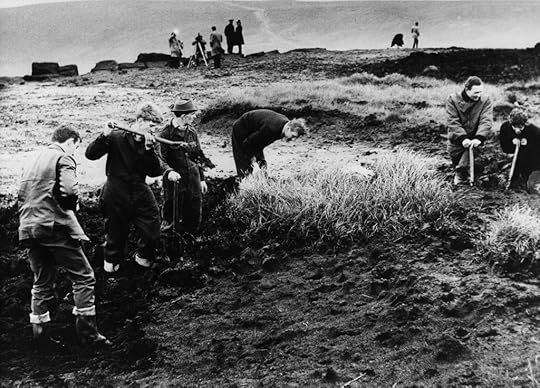 Criminal Psychology’s Role in Crime Analysis
Criminal Psychology’s Role in Crime AnalysisCriminal psychology offers crucial insights into understanding the motivations and behaviors behind heinous acts like the Moors Murders. This discipline examines the psychological makeup of offenders, seeking patterns that might explain why individuals commit such crimes. By analyzing Ian Brady and Myra Hindley’s psychological profiles, experts can uncover the interplay between their personalities, past experiences, and the sociocultural environment of 1960s Britain. Through this lens, professionals in the field can explore how psychopathological traits—such as lack of empathy, manipulativeness, and a need for control—might have driven their actions. Moreover, criminal psychology provides valuable frameworks for assessing risk factors and identifying warning signs in potential offenders, thereby aiding in both prevention and rehabilitation efforts. In the context of historical crime cases, these analyses not only enhance our comprehension of individual cases but also contribute to a broader understanding of criminal behavior, enabling society to better address and mitigate the conditions that lead to such tragic events.
The Mind of a Killer: Analyzing Ian BradyIan Brady, one of the central figures in the Moors Murders, presents a chilling case study for criminal psychologists. His actions and mindset provide profound insights into the psychological underpinnings of a killer. Brady, often described as a sociopath, displayed traits such as a lack of empathy, manipulative behaviors, and a profound detachment from societal norms. His fascination with Nazi ideology and literature on sadism reveals an obsession with power and control (a characteristic often seen in individuals who commit violent crimes). Furthermore, Brady’s methodical approach to his crimes indicates a calculated and deliberate mindset, aiming to exert dominance over his victims. By dissecting Brady’s psychological profile, experts can better understand how certain cognitive and emotional deficits might predispose individuals to commit such atrocities. This analysis not only aids in comprehending the Moors Murders but also contributes to the broader field of criminal psychology, offering tools for identifying and managing potential risks in similar profiles.
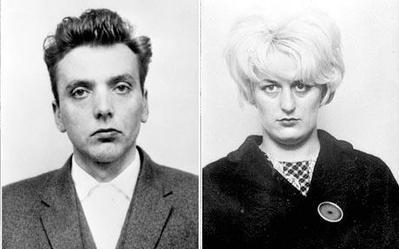 Myra Hindley: A Complex Psychological Portrait
Myra Hindley: A Complex Psychological PortraitMyra Hindley’s involvement in the Moors Murders complicates the narrative of criminal partnerships, offering a complex psychological portrait that continues to perplex researchers. Unlike Ian Brady, Hindley’s motivations and psychological profile suggest a nuanced interplay of influence and autonomy. While some argue that Hindley was manipulated by Brady, evidence also points to her active participation and willingness to engage in criminal acts. Her background reveals a desire for acceptance and control, which may have made her susceptible to Brady’s influence. However, it is essential to recognize her agency in the crimes committed. Hindley’s psychological profile raises questions about the dynamics of criminal partnerships and the factors that contribute to an individual’s descent into criminality. By examining her motives and personality traits, experts can explore how personal vulnerabilities and external influences converge to facilitate such behavior. This understanding aids in developing more effective psychological assessments and interventions in preventing similar crimes in the future.
Criminal Psychology and Historical Crime CasesThe application of criminal psychology to historical crime cases like the Moors Murders provides valuable insights into the minds of perpetrators, illuminating how past events can inform current understandings of criminal behavior. By analyzing Ian Brady and Myra Hindley’s psychological profiles within their historical context, experts can discern patterns and traits that might have contributed to their criminal actions. This retrospective examination offers a dual benefit: enhancing our comprehension of notorious crimes and enriching the field of criminal psychology with real-world case studies. Historical analysis also highlights the societal and psychological conditions that can precipitate such crimes, thereby offering a framework for preventing future occurrences. Furthermore, studying these cases allows psychologists to refine profiling techniques, improving the accuracy of identifying potential threats. In sum, integrating criminal psychology with historical crime cases not only deepens our understanding of specific offenders but also contributes to broader efforts in crime prevention and psychological assessment.
Challenging Stereotypes in True Crime NarrativesTrue crime narratives often risk perpetuating stereotypes that simplify complex criminal behaviors into reductive archetypes. In examining the Moors Murders, it is crucial to challenge these stereotypes, fostering a more nuanced understanding of the perpetrators and their actions. Simplistic portrayals can obscure the intricate psychological and societal factors that contribute to criminality, leading to misconceptions about the nature of crime and punishment. For instance, depicting Ian Brady and Myra Hindley solely as “monsters” neglects the broader context of their lives, including psychological predispositions and the socio-cultural environment of 1960s Britain. By acknowledging the multifaceted elements at play, true crime narratives can encourage a more comprehensive discourse that questions societal norms and explores the underlying causes of crime. This approach not only provides a deeper understanding of historical crime cases but also promotes empathy and awareness, challenging audiences to reconsider preconceived notions about criminality and its roots.
The Moors Murders’ Influence on Public PerceptionThe Moors Murders significantly shaped public perception of crime and criminality in Britain, leaving an enduring impact on societal attitudes. This case, with its shocking brutality and the involvement of seemingly ordinary individuals, challenged the public’s belief in the safety and morality of their communities. It sparked widespread fear and distrust, provoking questions about the nature of evil and the potential for such acts within society. The intense media coverage that accompanied the trial further amplified these fears, as sensational headlines and graphic details captured the nation’s attention. As a result, the Moors Murders became a cultural touchstone for discussions about crime, influencing public policy and perceptions of justice. The case also highlighted the need for better understanding and management of criminal behavior, prompting advancements in criminal psychology and law enforcement practices. Ultimately, the Moors Murders serve as a cautionary tale, reminding society of the complexities and potential darkness inherent in human nature.
Bridging History and Horror through Criminal PsychologyThe intersection of history and horror, particularly in the context of the Moors Murders, offers a unique opportunity to explore the depths of human behavior through criminal psychology. This approach allows us to bridge the gap between historical events and their horrific elements, leading to a more profound comprehension of both. By analyzing the psychological profiles of perpetrators like Ian Brady and Myra Hindley, we gain insight into the factors that drive individuals to commit unspeakable acts. This exploration highlights the relevance of historical crime cases in understanding contemporary issues of crime and punishment, emphasizing the timeless nature of these challenges. Moreover, examining the Moors Murders through this lens invites a broader discourse on the societal structures and psychological conditions that enable such transgressions. Ultimately, integrating criminal psychology with historical analysis not only enriches our understanding of past events but also equips us with the knowledge to address and prevent similar horrors in the future.
March 21, 2025
Katie’s Stories : Mr Grey
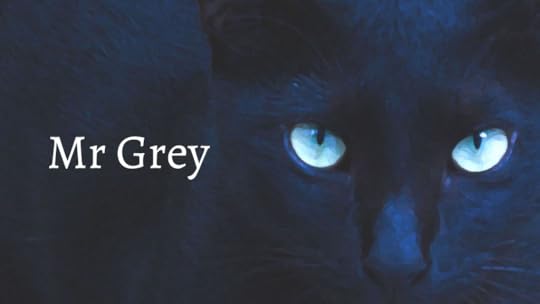 There’s no such thing as ghosts
There’s no such thing as ghosts“You’ve got to be kidding me,” I say, staring at my bleary-eyed reflection in the mirror before I reach into the bathroom cabinet and pull out a pack of antiseptic wipes. Closing the cabinet brings the mirror back to face me, and I wince again at the cut on my forehead. It isn’t deep, but it is bleeding.
By the time I finish cleaning it, the skin around the cut is red, angry and sore. I reach for my foundation to find it isn’t where I left it. I look around the bathroom, eventually spotting it on top of the linen cupboard. A place I can’t reach without the step ladder. This isn’t the first time I’ve woken up injured and with items in the flat in impossible places.
“There’s no such thing as ghosts,” I say to myself as I retrieve the step ladder from the kitchen. “There’s no such thing as ghosts.” I keep repeating the mantra as I return to the bathroom and clamber up the steps to retrieve my foundation. Coming down, I turn to face the mirror and drop the foundation. Reflected in the mirror, standing behind me, is a dark shape of a person, poorly defined and fuzzy but unmistakably there. I spin on my heels, my hand raises up to shield myself. But there is nothing there. “There’s no such thing as ghosts.”
Shaking, I put the steps back and rush through the rest of my morning routine. I swear again when the alarm on my phone rings.
 Photo by Meruyert Gonullu on Pexels.com
Photo by Meruyert Gonullu on Pexels.com“I know, I know,” I grumble, pulling my tights up. “I should be leaving.” I slip on my shoes. Running through my flat, I grab the sandwiches I had made the night before from the fridge and bolt out the door.
“Cassandra,” Mrs Housen, my elderly neighbour waves at me as I rush past, trying to wrestle my car keys from my handbag. “Late again?”
“Always,” I say freeing my keys and almost falling over.
“Look where you’re going, dear,” Mrs Housen calls out. “Oh, and before I forget, I’m making casserole tonight, I’ll leave a bowl on your mat.”
“You’re my lifesaver,” I call back clambering into my car.
As I start to reverse out of the driveway, there is a sound that makes my blood freeze. A scream that surely has to come from a devil, high pitched and deafening. I slam on the breaks and look in my side-view mirror. The creature that pads out from behind my car is huge. With long mottled grey fur, sporting several bald patches that reveal a scared and battered body. It is hard to believe that he is a domestic cat, given the size of him I suspect one of his parents was a wildcat, something that could be found roaming the moors, perhaps carrying off small children.
“Good morning to you, Mr Grey,” I said opening the car door. Mr Grey sits in front of me, blinking his one good eye expectantly. “I haven’t been shopping yet” I say. Mr Grey continues to stare at me. “But… what the hell I can buy lunch today.” I reach into my bag and pull out the cold sandwiches. “It’s just ham, I’m afraid.” I say opening the bread and dropping the ham for Mr Grey. He eats a meat in seconds, as I reach out and rub his ears. “You be good now, guard the house.” I get back into the car, Mr Grey watches as I speed away.
The office isn’t far, and I arrive only a few minutes late today.
“Hey Cassy,” Ralph smiles at me as I walk in.
“Hey Ralph,” I answer.
“What happened to your face?” he says, leaning forward. I automatically put my hand to the cut on my forehead.
“Oh, nothing,” I say.
“Cassy,” Ralph rolls his eyes at me.
“It’s not deep,” I say. “It stopped bleeding ages ago.”
“Because you packed it full of makeup,” Ralph says. “But that’s not what I meant, and you know it. You need to find out what’s going on, normal people don’t wake up with random injuries. Do a sleep clinic or something.”
“I’m not checking myself into a sleep clinic,” I snap, walking towards my desk. “I know you mean well but I’m fine.” Ralph grabs my right hand; he turns it so I can see the back of my hand and the scab slowly healing on my knuckle.
“And then there’s this one,” he flicks my hair off my shoulder, showing my neck where another cut is slowly healing. “And I bet there’s more that you keep covered.” Ralph leans forward, looking closely at my cut. “It almost looks like something a dog or a cat would do,” he mumbles. “Bootsie used to scratch me up something rotten when she was angry.” I shrug and sit at my desk. Ralph takes his seat opposite mine and settles in.
“I don’t have a cat, or a dog,” I say. “Or any pets, they’re not allowed in my building.”
“Well, whatever or whoever did this, you need to get it sorted. It’s been going on for months now.”
“I know,” I mutter turning to the computer, looking to see what dictation the partners had sent through. Ralph and I fell into a comfortable silence as I made a start on the typing.
“Lunch?” Ralph asks suddenly, I look up at the clock, surprised to see it is already 1pm.
“It’s all right, I’m going to stay in today,” I say. “I want to check some things online.”
“You still haven’t got your internet sorted? How long have you lived in that flat?”
“Too long,” I smile. Ralph rolls his eyes and walks out of the office. I reach into my bag and pull out the packet of biscuits I’d dropped in there yesterday. Minimising the office typing program, I open up a web browser and start looking for a flat. I’d been searching for something in my price range now for months, ever since I started seeing the shadows in the mirror and waking up with injuries. Unfortunately, there isn’t much available in my price range, close to work with parking.
After half an hour of fruitless searching an idea strikes me, I can’t move out yet, but that doesn’t mean I can’t do anything. If I can capture the events happening on video, then I would at least know what was happening and maybe I can show it to someone who could help me. I click onto a shopping website and by the time people start trickling back from lunch I have spent a good portion of this month’s budget and am the proud owner of a video camera and a huge data card.
The rest of the afternoon passes in a blur of urgent deadlines and unreasonable demands until Ralph taps my shoulder.
“Huh?” I say.
“Earth to Cassandra,” Ralph smiles. “It was time to leave half an hour ago.”
“What?” I say, my stomach drops. “Already?”
“It’s six o’clock,” Ralph points at the clock. “I’m heading home.” He laughs at my despondent expression. “You’re the only person I know who seems to prefer being in the office to being at home.” Ralph waves as he heads out. I’ll just finish one more, I tell myself.
I stay in the office until 8pm, but when I leave all the documents are typed and sitting on my bosses desk ready for tomorrows Hearing. I make a note of my overtime and head home.
 Photo by Pixabay on Pexels.com
Photo by Pixabay on Pexels.comI pull into the driveway and spot Mr Grey sitting in his usual spot, just to the side of the communal bins. I think he hunts the rats that like to pilfer the rubbish. As I pass him, I reached down to run my fingers through his mottled fur.
“How was your day?” I ask him. He meows loudly. “Really, that bad?” I stand up and allowe him to rub against my legs.
“You fussing over that cat again?” Mr Housen says as he comes down to the bins, rubbish bag in hand. “Your mad.”
“I’m not mad,” I say, holding open the bin while he drops his bag inside. Mr Grey takes a half hearted swipe at Mr Housen’s ankles, making the old man step back.
“Damn wretch hates everyone but you,” Mr Housen says.
“He only likes me because I feed him,” I say.
“No cats are smart. He owes you a life debt, and he knows it.” Mr Housen says as I reached down to give Mr Grey’s ears a rub before we headed inside.
“A life debt,” I laugh. “That sounds overdramatic.”
“Not so,” Mr Housen says. “You saved him after that punk with the fancy car hit him, he remembers that.”
“Maybe,” I shrug. “The vet said it was just cuts and bruises, nothing life threatening. The car was probably in worse shape.” I forced a laugh. “But who knew getting a cat stitches and some antibiotics could be so expensive.” Mr Housen laughs as we reached his front door.
“Good night.” I wave at him as he disappeared inside his flat. Picking up the casserole Mrs Housen had left for me by my front door, I stare at my front door for a long moment.
“Stop being a wimp.” I huff to myself, grabbing my keys and going inside.
•••
 Photo by u0141ukasz Klimkiewicz on Pexels.com
Photo by u0141ukasz Klimkiewicz on Pexels.comThe camera arrives that weekend.
I am sitting in the kitchenette eating breakfast when the doorbell ring. I buzz the delivery man in and head out to meet him. Taking my prize back inside, I spend the rest of the day fiddling with it, getting to know how it works and making terrible videos about the family of spiders that live under my bathroom sink.
That evening when I head to bed, I clear a space for the camera on the shelf above the vanity. I position it so it is facing the bed, but also capturing a sizable amount of the room.
That night I sleep fitfully, unable to fall into a deep sleep, I keep jerking awake feeling like someone is watching me. I wake in the morning with no new injuries. I check the camera footage and am relieved to see nothing more than a restless night. I put it on again the following night and again nothing sinister happens. Although the footage shows just how much of a restless sleeper I am. Hell, maybe I am doing this to myself? Maybe Ralph is right and I need a sleep clinic? The amount I toss and turn at night, it’s a wonder I’m not hurt worse than I am.
It is Tuesday when I finally see something odd.
I am eating dinner and reviewing Monday night’s footage of me tossing and turning when I spot movement on the screen that isn’t me. A lump forms in my throat, and I have to force myself to swallow my mouthful. Something is moving by my window. A dark shape moves across the window, along the ledge, until it reaches the far side. It waits for a moment before nudging the window open.
“Huh?” I frown, I keep the windows locked. How is it opening?
I watch as the dark shape steps into the room and reveals itself to be Mr Grey.
“What the hell?” I snap, leaning closer to my laptop screen.
Mr Grey sits at the foot of my bed and I expect him to settle down and maybe go to sleep, but he doesn’t. He sits, sphinx like, at the foot of my bed, watching the room. Like he’s waiting for something. I fast forward the footage and after two hours Mr Grey moves. He stands, facing the bedroom door, and opens his mouth, baring his teeth in a hiss. I turned the volume up on my laptop. Mr Grey yowls, but sleeping me doesn’t stir. The cat all but screeches and still I don’t wake. What the hell is he screeching at? There is nothing in the room. Why am I not waking up?
I watch transfixed as Mr Grey leaps forward out of the view of the camera, I can hear him crashing around, yowling, it sounds like he’s fighting something. After a moment, he hurtles backwards and lands on me; his oversized paws swiping at thin air. I glance down at my arm and spot a faint cut I hadn’t noticed before. Mr Grey is responsible for my injuries! He’s coming into my room and getting zoomies!
“You little bugger,” I hiss. I keep watching, and eventually Mr Grey calms down. He limps across the bed, sniffs at me briefly before leaping up onto the windowsill and heading out the way he had come in. The window remains open for a while, but as I fast forwarded, I spot it closing, caught in a draft, probably.
“Well, I’ll be,” I set the rest of my dinner aside. I go into my bedroom and check the window. Sure enough, the catch is broken. I laugh feeling relief at finally knowing what is happening and that it is nothing more sinister than an oversized tom cat.
I go to bed that night with a smile on my face.
“I don’t believe it,” Ralph says the next day as I head out to lunch with him.
“I know, it surprised me,” I grin.
“No Cassy, really, I don’t believe it.” Ralph frowns at me. “You said things in the flat were moving around. I thought you were sleepwalking, hence why I kept suggesting the sleep clinic.” I thought about how items in my flat often appeared in places I had not left them and shivered. I still couldn’t explain that. But maybe Ralph was right, maybe I was sleepwalking.
I used the rest of my lunch break to pick up a new lock for the window and fit it myself that evening. I consider the camera before I go to bed and almost leave it off. But turn it on to see if Mr Grey has other ways in, or if he is buff enough to break the lock.
I sleep peacefully that night and check the footage after work the next day. No sign of Mr Grey. I leave the camera on at night again and the next and the next, nothing happens.
 Photo by Ketut Subiyanto on Pexels.com
Photo by Ketut Subiyanto on Pexels.comI wake up with a jolt on Sunday in the worst pain I have ever felt. The room is pitch black. The clock reads 3:15am and my right arm is broken.
Hospital, my pain fogged brain manages though the surprise and pain. I need to get myself to the hospital. I get up and pull on my sneakers; I think about trying to change my clothes, but there’s no way I can face it, the hospital would just have the deal with my pyjamas. I drop my keys as I close the door to my flat. Bending down makes my arm hurt worse. But after a few tries, I retrieve my keys.
“What’s going on?” Mr Housen says, opening his front door.
“I’m so sorry,” I manage, fighting tears. “I didn’t mean to wake you, I didn’t realise I was that loud.”
“What’s wrong?” Mrs Housen pushes past her husband and comes over to me. “Your arm!” she shrieks. “Edgar get the car keys, we need to take her to the hospital.”
Mr Housen wipes the sleep from his eyes and nods. “Just give me a moment.” Mr Housen remerges dressed a moment later and together they get me into the car without tears.
“Dear, we told you to come to us if you needed anything,” Mrs Housen says firmly as Mr Housen drives.
“You tell me who the bastard is and I’ll kill him,” Mr Housen fumes. I would smile if I wasn’t in so much pain. Mr Housen is pushing 70 and smaller than me, but he sounds ferocious.
“I don’t know what happened,” I say.
“Don’t you lie to me girl,” Mr Housen snaps. “If your boyfriend is knocking you about you tell me.”
“I don’t have a boyfriend,” I say, trying to breathe through the pain in my arm. “No one else is in my flat but me.”
“Did you fall?” Mrs Housen asks. “We heard a terrible noise before we heard you outside, terrible loud it was.”
“I don’t know,” I say.
When we arrive at the hospital Mr & Mrs Housen offer to wait with me but they look exhausted so I sent them home reassuring them I had money for a taxi in my handbag and that would let them know I was home the minute I got back. The hospital staff saw me quickly and as soon as I have enough painkillers in me to not cry I call my mum to let her know what has happened.
“How?” she asks after I explain where I am and why I’m calling at almost 5am.
“I don’t know,” I say. “I just woke up, and it was broken, it can’t have been Mr Grey, I mean he’s big but this is ridiculous.”
“Who the hell is Mr Grey?” mum all but shouts down the phone.
“He’s a cat,” I say.
“A cat?” mum snaps. “Cassandra … Cassandra I … what are you talking about?” A nurse shouts my name.
“I’m being called,” I stand up. “I’ll call you back soon.” I hang up before she can answer.
I am X-rayed and the doctor tells me I have a displaced fracture, normally these types of fractures happen in bad falls or car accidents. Something has to hit you with enough force to not only break the bone, but force it to move out of place. I can’t explain it. The doctors treat my lack of explanation with extreme suspicion. Blood tests are taken and a bone density scan is ordered. Then I have to endure the biggest needle in the world in the back of my hand before they literally pull my arm back into the right position. I’d like to say I take it with grace, but I can’t. I was sobbing by the time they gave me an appointment to attend the fracture clinic in two days to have my wrist plastered once the swelling has gone down.
I sit in the waiting room crying and call my mum again.
 Photo by EVG Kowalievska on Pexels.com
Photo by EVG Kowalievska on Pexels.com“Cassandra,” mum sounds angry when she answers the phone. “I’ve been talking to your neighbour.”
“Mrs Housen?”
“Yes, she said you gave her my number when you moved in, in case anything happened.”
“Oh yeah,” I sniffed. “I’d forgotten that, she’s sweet,”
“She’s worried about you,” mum says in her, I’m-so-angry-I-might-murder-you voice and fall silent. “And I am too, although as soon as your father arrives I will stop being worried and will be furious with you.” Mum’s voice is rising in volume. “How could you not tell me?”
“Tell you what?” I say.
“That your boyfriend is hitting you!” mum’s voice brakes, and she sobs. “Why didn’t you tell me?”
“Mum I don’t have a boyfriend,” I say. “Honest, no one is hitting me.”
“Mrs Housen thinks someone is and now you call at 5am with a broken arm and no explanation.”
“Well … mum, I honestly …”
“Shut up,” mum snaps, her breath coming in ragged hiccups. “Cassandra how could you not ask us to help? We would have helped, you know we would have.”
“Mum, no one is…”
“Every few days you’ve got a new injury, poorly covered up with makeup,” mum snaps. “That’s what she said. Every. Few. Days.”
“Mum please I promise there’s no one,” I say. “I kept waking up with scratches, sometimes they were deep, so I set up a camera and caught Mr Grey sneaking in to my room at night and scratching me.”
“Mr Grey, the cat?”
“Yes, honestly mum.”
“You expect me to believe a cat broke your arm?” mum says.
“He’s a big cat,” I mutter. I heard mum take a deep breath.
“We’ll talk about this later, when you’re safe, right now I want you to go to Mrs Housen, you will sit with her till your father gets there. He left half an hour ago so he should be there in two hours. When he gets there, you will pack a bag and you will come home.”
“Mum, what about work,” I say.
“You’ve broken your arm!” mum snaps. “You can’t type with a broken arm; you’ll go on sick leave.”
“I have to be back at the fracture clinic in two days when the swelling goes down.”
“We have a hospital here, they can transfer you,” mum says firmly.
“But what about?”
“Cassandra, be quiet, you’re coming home.”
And I obey. I get a taxi back to Mr Housen’s flat. Once there, I sit and drank approximately fifty thousand cups of tea while waiting for my dad to arrive. He is stern faced when he knocks on the door and only speaks a couple of words at a time. I can feel the anger coming from him. He feels betrayed; I didn’t go to him for help when he thought I needed it. We pack a bag for me and drive home. By the time we arrive home, dad has calmed down a little and is speaking to me in more than grunts and single word answers.
The hospital at home do more x-rays and confirm that I have suffered a bad break; they also note that the bruising on my arm is very oddly shaped, hand shaped. Like someone had put their hands on my arm and snapped it like a twig. But that would take a great deal of strength, more than most people have at any rate. I can’t explain it, no one can.
I stay with mum and dad for three weeks, I could have stayed there forever. The feeling of being at home was addictive. But I couldn’t just give up my independence. I had to go back. I almost ask dad to move in with me until I find somewhere else to live, but he has his own job to go to. I almost ask him for a loan so I can move into a hotel until I find somewhere else to live, but I can’t ask, I know mum and dad don’t have that kind of money. As it was, I have strict rules to follow, multiple phone calls every day. Mrs Housen will also check in on me and has already been given a flat key, and I am not allowed to do over two days at work a week until I’m out of plaster.
Dad drops me off at home on Friday, and the minute my front door closes I feel cold. I am home alone, in the flat where something unseen has broken my arm. For a split-second, I’m tempted to run after my dad.
Holy shit, what am I doing back here?
 Photo by Elina Krima on Pexels.com
Photo by Elina Krima on Pexels.comAfter an hour of sitting in the kitchen trying not to have a panic attack, I pluck up the courage to go into my bedroom and see the camera sitting there. I try to turn it on, but the battery is dead, I hadn’t turned it off the night I had broken my arm. I sit and stare at it for a while, feeling nervous, that camera had filmed the whole ordeal. Can I watch that footage?
How can I not?
I plug the laptop in and wait for it to start. What am I going to do if it shows something? What am I expecting it to show? What if there was someone in my flat that night? What if there wasn’t? How the hell did my arm get broken?
With shaking hands, I insert the camera’s data card and open the viewing program. I watch myself sleep for a few minutes before hitting fast forward. I hit play again when I see the bedroom door open. I half expect to see Mr Grey padding into the room, but nothing comes in. I rewind the footage three times and watch the door open by itself three times. Putting it down to a draft, I continue watching. I spot Mr Grey suddenly at the window, pawing at the glass, trying to get in. He is frantic in his efforts to get in. His oversized paws scratching the glass. The window shakes under his weight. Three of my ornaments topple off the vanity, Mr Grey becomes more frantic, throwing himself at the window. I watch as my right arm rises as if lifted by an invisible hand, stays aloft for a moment, then snaps.
I run to the bathroom and throw up the burger I at a roadside cafe on the way down here. My throat burns with stomach acid by the time I finish retching.
I go back into my room; the laptop is still running. Fast forwarding the footage, I feel bile rise again. I watch as dad and I return and pack a bag for me before leaving. A few moments after I hear the front door close, something that I can’t see pulls the quilt and sheets off my bed and shreds them in seconds. I glance at the perfectly made bed and realized that it has all new sheets; Mrs Housen must have been in. What must she have thought of finding the place torn up?
On the laptop Mr Grey is back at the window, throwing himself at the glass again until the window springs open. I watch as he bounds into the bedroom, hissing and spitting, 25lb of pure fury. He leaps around the room, clawing at the something I can’t see; his long grey fur lifted, making him seem even bigger. I watch him fight the invisible force that had broken my arm, and I watch him win. The door to the bedroom slams closed as Mr Grey stands victorious on the bed. He sits after a few moments and licks his wounds. I feel hot tears on my cheeks before I realise I am crying.
I turn off the laptop and stand up, decision finally made.
I phone work and inform them that I am handing in my notice. I phone my mum and asked her if I could come home until I find a new job and somewhere to live. Mum doesn’t ask questions, she sounds relieved. I phone my landlord and tell him I am leaving; I don’t tell him why; I want to. The thought of someone else living here and experiencing this make me sick, but the words stick in my throat. I will write a letter later once I’m home. I write a thank-you card for Mr & Mrs Housen, giving them my parents’ address and asking them to keep in touch. Lastly, I pick up my purse and head into town. I have a couple of hours until dad arrives to pick me up and I have a lot to buy. I come back in a taxi. The driver helps me unload a jumbo bag of kitty litter, six months worth of cat food, a cat tree, a carrier, a selection of toys and the biggest cat bed I could find.
I find Mr Grey, my furry protector, down by the bins and coax him into the cat carrier.
“You’re coming home with me,” I say to him.



